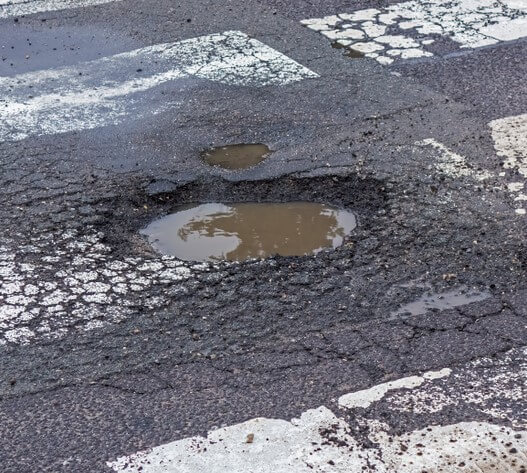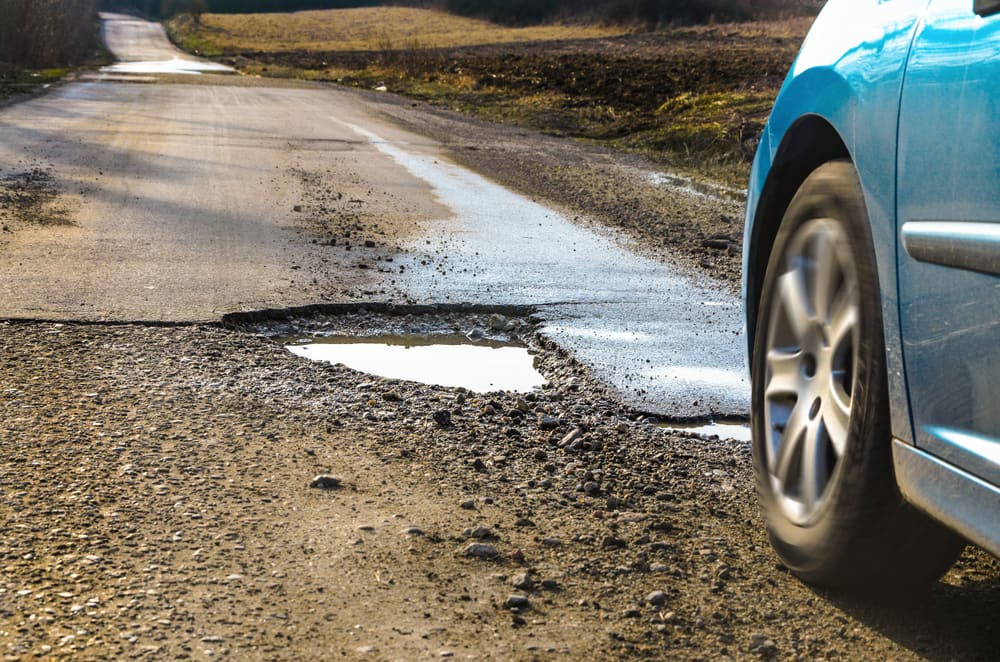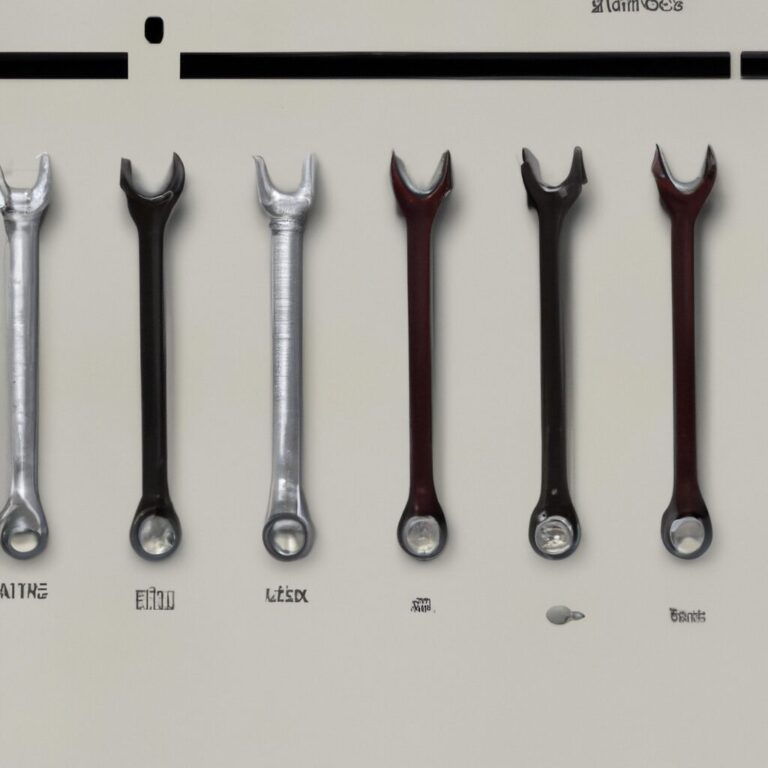How to Avoid Potholes
To avoid potholes, stay alert while driving and watch for road signs and markers. Adjust speed accordingly.
Navigating roads can be tricky, especially when faced with the menace of potholes. These annoying craters can wreak havoc on your vehicle if not navigated carefully. By paying close attention to your surroundings and heeding warning signs, you can significantly minimize the likelihood of encountering these road hazards.
Knowing how to spot and avoid potholes can not only save you from potential car damage but also contribute to safer and smoother driving experiences. Let’s explore some practical tips and strategies to help you steer clear of potholes and keep your journey stress-free.
Importance Of Avoiding Potholes
Avoiding potholes is essential for maintaining a smooth and safe ride. By practicing defensive driving, staying alert, and following traffic signs, you can successfully navigate the roads and steer clear of these road hazards. Safeguard your vehicle and yourself by avoiding potholes.
Potholes can cause significant damage to your vehicle and pose a serious safety hazard, making it crucial to understand the importance of avoiding them. By taking proactive measures to steer clear of potholes, you can save yourself from costly car repairs and ensure a safer driving experience.Costly Car Damage
Potholes can wreak havoc on your vehicle, leading to costly repairs. The impact of hitting a pothole can cause misalignment, suspension damage, and tire punctures, resulting in hefty repair bills. By avoiding potholes, you can protect your vehicle from unnecessary wear and tear, ultimately saving money on maintenance and repairs.Safety Hazard
Navigating around potholes is essential to maintaining a safe driving environment. Potholes can cause sudden jolts to your vehicle, potentially leading to loss of control or accidents. Additionally, swerving to avoid potholes can result in collisions with other vehicles or objects. By prioritizing the avoidance of potholes, you can uphold the safety of yourself, your passengers, and other road users. In summary, evading potholes is essential for preserving both the condition of your vehicle and the safety of all road users. By making a conscious effort to steer clear of potholes, you can minimize the risk of damage to your car and promote a safer driving experience for everyone.Identifying Potholes
Identifying potholes is crucial for avoiding potential damage to your vehicle. By being able to recognize common signs, you can take proactive measures to steer clear of these road hazards.
Visible Signs
Visible signs of potholes include uneven, rough patches on the road surface, often with visible holes that can vary in size and depth. These areas appear worn out and can be filled with water or debris. Avoid driving over these areas to prevent damage to your vehicle.
Unusual Noise Or Vibration
Unusual noise or vibration while driving over certain areas of the road can indicate the presence of a pothole. Listen for any sudden bumps or rattling sounds, which may signal the need to proceed with caution or alter your route if possible.
Tips For Avoiding Potholes
Maintain a safe distance, scan the road ahead, slow down, and use proper tire inflation – these tips are crucial for avoiding potholes.
Maintain A Safe Distance
Keep enough space between your vehicle and the one ahead to spot and avoid potholes.
Scan The Road Ahead
Be attentive to upcoming obstacles, watch for puddles that may disguise potholes.
Slow Down
Reduce your speed when approaching areas known for potholes, enabling you to react quickly.
Use Proper Tire Inflation
Maintain correct tire pressure to minimize the impact of potholes on your tires and vehicle.

Credit: www.freeway.com
Protecting Your Vehicle
When it comes to driving, one of the biggest challenges is navigating through potholes. Not only can they cause discomfort to the passengers, but they can also be detrimental to the vehicle. Protecting your vehicle from the damage caused by potholes is crucial for maintaining its longevity and ensuring a smooth driving experience.
Inspect Tires Regularly
Regularly inspecting your tires is essential for protecting your vehicle from pothole-related damage. Check for signs of uneven wear, bulges, or punctures. Ensure that the tire pressure is at the recommended level to mitigate the impact of hitting potholes.
Check Suspension And Alignment
Regular checks on the suspension and alignment of your vehicle can help prevent damage from potholes. Misaligned wheels or worn-out suspension components can exacerbate the impact of hitting potholes, leading to extensive damage to your vehicle.
Use High-quality Shock Absorbers
Investing in high-quality shock absorbers can significantly improve your vehicle’s resilience against pothole damage. These components play a crucial role in dampening the effects of uneven road surfaces, reducing the risk of damage to your vehicle.
What To Do If You Can’t Avoid A Pothole
If you can’t avoid a pothole while driving, slow down and grip the steering wheel tightly. Try to straighten your vehicle as much as possible before hitting the pothole. Afterward, check for any damage to your car and get it inspected if necessary.
Stay Calm And Keep Your Grip
When driving, encountering a pothole can be unexpected and unnerving. It can cause you to lose control of your vehicle and potentially result in damage. If you find yourself in a situation where you can’t avoid a pothole, it’s crucial to stay calm and keep your grip on the wheel.
Remember to:
- Keep both hands firmly on the steering wheel to maintain control.
- Remain focused and avoid sudden, aggressive movements.
- Steer straight and resist the urge to swerve, as it may cause further damage or even a collision.
- Brace yourself and your passengers for impact, ensuring everyone is securely fastened with their seatbelts.
Report The Pothole
If you encounter a particularly dangerous or damaging pothole, it’s important to report it to the relevant authorities. Reporting potholes helps ensure the safety of other road users and may lead to necessary repairs. Here’s what you can do:
- Take note of the exact location of the pothole, including the nearest crossroads or landmarks.
- Make a mental or written description of the pothole’s size and depth, as well as any visible hazards around it.
- If possible, take a photo of the pothole for documentation purposes.
- Contact your local transportation authority or use their online reporting system to submit the details you’ve gathered.
Assess And Repair Any Damage
After encountering a pothole, it’s crucial to assess any damage it may have caused to your vehicle. Ignoring potential issues could lead to further complications down the line. Follow these steps to assess and repair any damage:
- After safely coming to a stop, check your tires for any visible signs of damage, such as bulges, punctures, or unusual wear.
- Inspect the rims and suspension system for cracks, dents, or misalignment.
- If you notice any concerning damage, don’t attempt to fix it yourself unless you have the necessary knowledge and experience. Take your vehicle to a trusted mechanic for a thorough inspection and repairs.
- Keep track of any expenses incurred as a result of the pothole damage, as you may be eligible for reimbursement through your local transportation authority or insurance provider.

Credit: debrouxautomotive.com

Credit: www.youtube.com
Frequently Asked Questions Of How To Avoid Potholes
Is It Possible To Avoid Potholes?
Yes, it is possible to avoid potholes by driving attentively, scanning the road ahead, and avoiding sudden maneuvers.
Is It Better To Hit A Pothole Fast Or Slow?
It’s better to hit a pothole slowly to minimize potential damage to your vehicle’s suspension and tires.
What Mostly Cause Potholes?
Potholes are mostly caused by water seeping into the pavement and freezing, leading to cracking and deterioration. Traffic then further weakens the pavement, resulting in potholes. Regular maintenance and proper drainage can help prevent their formation.
Is It Okay To Drive Over A Pothole?
Yes, it is not advisable to drive over a pothole. Potholes can cause damage to your vehicle’s tires, wheels, suspension, and alignment. This can lead to costly repairs and compromises your safety on the road. It is recommended to avoid potholes whenever possible to prevent potential issues.
How Can I Avoid Potholes On The Road?
To avoid potholes, always keep a safe distance behind the vehicle in front of you and stay alert for any road hazards ahead.
What Are The Signs That Indicate A Pothole Ahead?
Look out for signs such as cracked pavement, uneven road surface, or other vehicles abruptly swerving to avoid a certain area on the road.
Can I Prevent Damage To My Car From Potholes?
Yes, you can prevent damage by ensuring your tires are properly inflated, maintaining a slow and controlled speed, and avoiding sudden turns when encountering a pothole.
Conclusion
In short, by staying aware of your surroundings, maintaining proper tire pressure, and being mindful of road conditions, you can navigate the roads with confidence and avoid the pitfalls of potholes. Remember, a little proactive prevention can go a long way in preserving your vehicle and ensuring a smoother journey.

